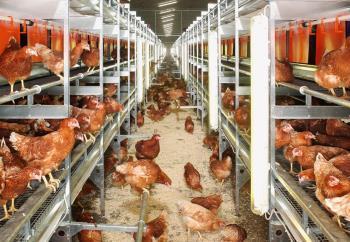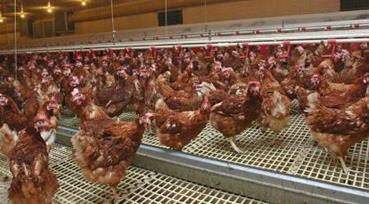 This update of U.S cage-free production is sponsored by Big Dutchman USA for the benefit of producers in North America.
This update of U.S cage-free production is sponsored by Big Dutchman USA for the benefit of producers in North America.
The USDA Cage-Free Report covering May 2025, was released on June 2nd 2025.
The report documented the complement of hens producing under the Certified Organic Program to be 19.8 million (rounded to 0.1 million), down 0.6 million or 2.9 percent from April 2025. The number of hens classified as cage-free (but excluding Certified Organic) and comprising aviary, barn and other systems of housing apparently increased by 4.0 million hens or 3.8 percent from April 2025 to 109.3 million (effectively over two months) despite depopulation of a two large Arizona complexes under common ownership.
Depopulation was carried out as a result of HPAI through the fourth quarter of 2024 and continuing in January and February 2025 (31 million), but with lower intensity in March (0.2 million), April (1.0 million) and May (3.8 million).
Average weekly production for Certified Organic eggs in May 2025 was down 3.2 percent compared to April 2025 with a questionably high average weekly production of 84.2 percent. Average weekly flock production for cage-free flocks other than Certified Organic was up 3.4 percent in May 2025, and with a high average hen-month production of 82.6 percent. Seasonally placed younger flocks in anticipation of periods of peak demand increase the availability of cage-free and organic eggs in response to pullet chick placements 20 weeks previously.
There is no adequate explanation for the high production rate especially if the reported number of hens is lower than actual, and in view of a possible undercount following HPAI flock depopulation.
According to the USDA Egg Markets Overview and data from the weekly USDA Shell Egg Demand Indicator for May 30th the categorization of U.S. flocks according to housing system among the total of 287.0 million producing hens on May 1st comprised:-
Caged, 158.8 million (55.1% of total flock);
Cage Free, 109.3 million (38.0%) with 87% of this population in barns and 6.5% each on free-range and pasture;
Organic, 19.8 million (6.9%) with 60.6% of this population in barns and 22.7% on free-range and 16.7 on pasture: or other extensive systems
Losses attributed to HPAI in 2025 to date comprised:-
Caged flocks, 20.2 million representing 7.0 percent of a nominal 287 million hens
Cage-free flocks, 14.8 million representing 5.2 percent
Organic flocks, negligible, >0.1 percent
|
Average Flock Size
(million hens)
|
Average
May 2025
|
Average
Q1-2025
|
Average
Q4- 2024
|
Average
Q3 –
2024
|
Average
Q2 –
2024
|
Average
Q1-
2024
|
|
Certified Organic
|
19.8
|
20.4
|
20.5
|
20.0
|
18.8
|
18.3
|
|
Cage-Free Hens
|
109.3
|
103.4
|
104.5
|
103.9
|
101.0
|
105.7
|
|
Total Non-Caged
|
129.1
|
123.8
|
125.0
|
123.9
|
119.8
|
124.0
|
|
Average Weekly Production (cases of 360 eggs)
|
April
2025
|
May
2025
|
|
Certified Organic @ 83.9% hen/day
|
334,431
|
323,520 -3.2%
|
|
Cage-Free @ 82.6% hen/day
|
1,698,059
|
1,756,075 +3.4%
|
|
Total Non-Caged @ 82.8% hen/day
|
2,032,085
|
2,079,595 +2.3%
|
On June 2nd USDA recorded the following National inventory levels expressed in 30-dozen cases (rounded) with the weekly change as a percentage of the total quantity of eggs:-
Commodity shell eggs of all sizes. 1,345,000. (+1.3%)
Commodity breaking stock. 331,100. (+4.0%)
Specialty eggs. 36,400. (-8.7%)
Certified organic eggs. 93,900. (+8.7%)
Cage Free eggs 415,000. (+6.1%)
|
Average Nest Run Contract Price Cage-Free
White and Brown combined
|
$1.73/doz. ($1.70/doz. from July 2024
|
|
May 2025 Range:
|
$1.55 to $2.10/doz.
|
|
FOB Negotiated May price, grade-ready quality, loose nest-run. Price range $2.00 to $4.80 per dozen
|
Average May 2025 Value of $3.53/doz. ($4.48/doz. April 2025)
|
|
Average May 2025 advertised promotional National Retail Price C-F, Large White*
|
$3.87/doz. May 2025 (4 regions only)
(White was $7.99/doz. in April 2025)
|
|
USDA Based on 4 Regions, 764 stores
NW, SW MW & SC.
|
Range $3.31/doz. (SC) to $4.12/doz. (SW)
|
*April report listed only White. March report only Brown
 Negotiated nest-run grade-ready cage-free price for May 2025 averaged $3.53 per dozen, down $0.95 per dozen (21.2 percent) from $4.48 per dozen in April 2025, reflecting an imbalance between demand and supply.
Negotiated nest-run grade-ready cage-free price for May 2025 averaged $3.53 per dozen, down $0.95 per dozen (21.2 percent) from $4.48 per dozen in April 2025, reflecting an imbalance between demand and supply.
The May 2025 advertised U.S. featured retail price for Large White cage-free eggs over 674 stores in only four regions (NW, SW, MW and SC.) was $3.87 per dozen. This compares with 62 stores featuring cage-free Large White in April and reflects more promotions as the year has progressed, consistent with the lower incidence rate of HPAI during March and April but followed by an upsurge in May.
The recorded average wholesale price of $3.53 per dozen plus a provision of $0.60 cents per dozen for packaging, packing and transport, resulted in a theoretical price of $4.13 per dozen delivered to CDs. The average four-region advertised promotional retail price of $3.87 per dozen corresponds to a theoretical average negative retail margin of -6.8 percent (+57.2 percent last month for Large C-F white) but with more promotions offered by a larger number of stores featuring cage-free eggs. Margins are presumed higher for non-featured eggs including pastured and other specialty eggs at shelf prices attaining in excess of $9.00 per dozen in high-end supermarket chains. Retailers maximizing margins especially on Certified Organic, free-range and pastured categories restrict the volume of sales, ultimately disadvantageous to producers.